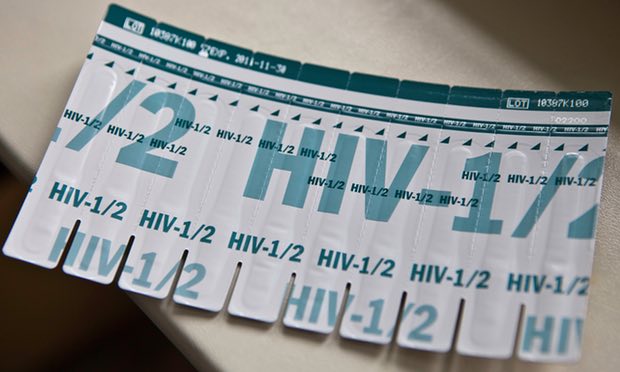
Activists have criticised the Ugandan president for failing to cater for gay men in his new plan to end HIV by 2030.
President Yoweri Museveni launched his ambitious initiative last week, but did not specifically mention gay people, sex workers and drug users – who bear a disproportionate share of the HIV burden.
The five-point plan focuses on accelerating action to stop new HIV infections, especially among adolescent girls and young women, and eliminating mother-to-child transmission of HIV.
It also aims to increase testing among men to reach the 90-90-90 target set by UNAids, which calls on countries to ensure that by 2020, 90% of people living with HIV are diagnosed, 90% of diagnosed people are put on antiretroviral treatment, and 90% of people on treatment have a fully suppressed viral load – the measure of successful treatment.
“Uganda will not end Aids if these populations are left out and [continue] to be marginalised, stigmatised and discriminated against in our planning. They have high HIV prevalence and incidence,” said Sylvia Nakasi, policy and advocacy officer, Uganda Network of Aids Service Organisations (Unaso).
Moses Mulindwa, deputy executive director of Spectrum Uganda Initiatives, which works to empower gay men, said that while the president may not have mentioned the involvement of men who have sex with men and other at-risk groups, the initiative would definitely have to include them if it was to be productive.
Health minister Sarah Achieng Opendi said gay communities should not get special treatment. “We don’t want homosexuality and homosexuals in this country. People want to promote what is not in our culture. We can’t accept it.
“Our hospitals are open. We don’t ask people whether they are homosexual or not. Let them go and test. If they are positive, they start treatment. But we can’t give them special attention,” she said.
Uganda has seen a significant reduction in new HIV infections from 135,000 in 2010, to approximately 60,000 in 2016, in men and women. New infections among children dropped from 26,000 in 2010 to 4,000 in 2016.
Out of the 1.5 million people living with HIV, 1 million people are enrolled in care and 980,954 are on antiretroviral therapy. But the country is not on course to meet the 90-90-90 target.
According to the National HIV strategic plan, HIV prevalence among gay men was 13%, among men in uniformed services 18.2%, among sex workers 37%, and as high as 40% among fishing communities.
Homosexuality, sex work and drug use are all outlawed in Uganda and are punishable by long prison sentences.
In 2014, Uganda passed a punitive HIV Prevention and Control Act, which criminalises deliberate transmission of the virus, which activists condemned as a “step backward in the fight against Aids”.
“We will only achieve the target to eliminate HIV by 2030 if we change the way we are doing business,” said Unaso’s Nakasi. “We need to set ambitious targets, increase our domestic financing of the response – we need a National Aids Trust Fund up and running – more emphasis on prevention, prevention using proven options like VMMC [voluntary medical male circumcision], use of prophylactic medications (PrEP), targeting high risk populations, and above all address HIV stigma and discrimination.”
“[The president’s fast-track initiative] can only be achieved if corruption does not eat it up and resources committed are put to its intended purpose,” said Mulindwa.



